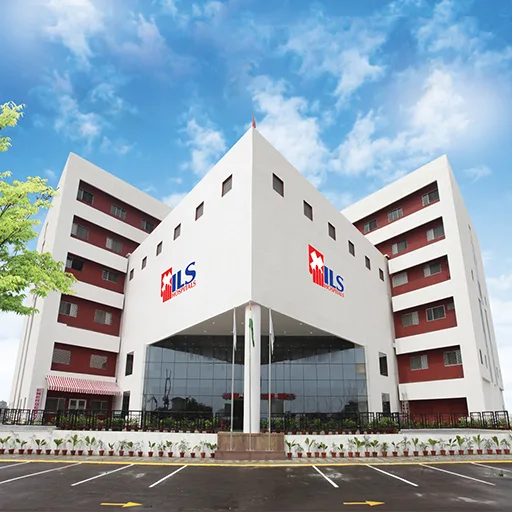Excellence in Open Reduction Internal Fixation (ORIF) Surgery
Open Reduction Internal Fixation (ORIF) is a surgical procedure designed to address severely broken bones. It is primarily employed for fractures that cannot be effectively treated with a cast or splint, typically involving fractures that are displaced, unstable, or those that affect the joint.
What is ORIF Surgery?
The term “Open Reduction” refers to the surgeon making an incision to re-align the fractured bone. “Internal Fixation” entails the use of hardware such as metal pins, plates, rods, or screws to secure the bones in their proper position. Importantly, the hardware remains in place after the bone has healed.
Typically, ORIF is considered an urgent surgical intervention. It is recommended when your bone:
- Suffers multiple fractures.
- Shifts out of its normal position.
- Penetrates through the skin.
ORIF may also be necessary if a bone was previously re-aligned without an incision, a procedure known as closed reduction, but failed to heal correctly.
This surgical procedure is intended to alleviate pain, restore mobility, and promote proper bone healing.
Factors Influencing ORIF Recovery
The success and duration of recovery following ORIF surgery are influenced by several factors, including:
- Age
- Overall health condition
- Post-surgery rehabilitation
- Severity and location of the fracture
ORIF Surgery Process
ORIF is conducted by an orthopedic surgeon and is employed to repair fractures in the arms and legs, including the shoulder, elbow, wrist, hip, knee, and ankle.
The timing of your surgery can be immediate or scheduled in advance based on your specific fracture and associated risks. If your surgery is planned, you might be required to fast and discontinue certain
medications.
Prior to surgery, you may undergo:
- Physical examination
- Blood tests
- X-rays
- CT scan
- MRI scan
These diagnostic tests enable the medical team to thoroughly assess your fractured bone.
ORIF is a two-part procedure, and the surgery duration depends on the nature of the fracture. During the surgery:
- An anesthesiologist administers general anesthesia, ensuring you are in a deep sleep and pain-free during the procedure. In some cases, you may be connected to a breathing tube to facilitate proper respiration.
- The first part, open reduction, involves the surgeon making an incision, moving the bone back into its correct position.
- The second part, internal fixation, sees the surgeon affix metal rods, screws, plates, or pins to the bone to maintain alignment. The choice of hardware is determined by the specific location and type of fracture.
- The incision is closed using stitches or staples, and a bandage is applied. Depending on the location and type of fracture, a cast or splint may be used.
Post-ORIF Procedure Expectations
Following ORIF surgery, medical professionals will closely monitor your vital signs, blood pressure, breathing, and the nerves surrounding the broken bone. The duration of your hospital stay can vary – it might range from a same-day discharge to several days, contingent on factors such as the type and location of your fracture.
ORIF Recovery Timeline
Recovery periods following ORIF can typically span from 3 to 12 months. The specific duration hinges on the type, severity, and location of your fracture. Complications that arise after surgery may extend the recovery timeline.
As your bones begin to heal, your doctor may recommend physical or occupational therapy to facilitate recovery.
For a smooth recovery, here’s what you can do at home:
- Follow your doctor’s instructions regarding pain medication, which may include over-the-counter or prescription medications.
- Maintain proper cleanliness and care for your incision. Cover it as directed by your doctor and practice regular handwashing. Seek guidance on changing bandages correctly.
- Elevate the limb if instructed, and apply ice to alleviate swelling.
- Avoid applying pressure to the limb, as it may need to remain immobile for a specified duration. Follow any instructions regarding the use of a sling, wheelchair, or crutches.
- Continuously engage in physical therapy exercises and stretches as instructed by your physical therapist.
Regular check-ups following surgery are essential, as they enable your doctor to assess your healing progress.
Walking After ORIF Ankle Surgery
After undergoing ORIF ankle surgery, you may not be able to walk for a certain period. During this phase, you can use a knee scooter, seated scooter, or crutches to minimize pressure on the ankle, preventing complications and promoting healing.
Your doctor will provide guidance on when it’s safe to apply weight to the ankle. The timeline for this varies depending on the type of fracture.
Risks and Side Effects of ORIF Surgery
As with any surgical procedure, ORIF surgery carries potential risks and side effects, including:
- Bacterial infection (related to the hardware or incision).
- Bleeding.
- Blood clots.
- Allergic reactions to anesthesia.
- Nerve or blood vessel damage.
- Tendon or ligament damage.
- Incomplete or abnormal bone healing.
- Displacement of metal hardware.
- Reduced or lost mobility.
- Muscle spasms or damage.
- Arthritis.
- Tendonitis.
- Audible popping and snapping.
- Chronic pain due to hardware.
- Compartment syndrome, a condition involving increased pressure in the arm or leg.
In cases of hardware infection, removal may be necessary. Additionally, repeat surgery may be required if the fracture does not heal correctly.
Although such complications are relatively rare, the risk may be elevated for individuals who smoke or have certain medical conditions, such as obesity, diabetes, liver disease, rheumatoid arthritis, or a history of blood clots. To minimize these risks, it’s crucial to adhere to your doctor’s pre- and post-surgery instructions.
Ideal Candidates for ORIF Surgery
ORIF is not the appropriate choice for all fractures. It is generally recommended for individuals with severe fractures that cannot be managed with a cast or splint, or for cases where closed reduction (re-aligning the bone without an incision) did not result in proper healing.
Minor fractures can often be treated with closed reduction or a cast or splint, obviating the need for ORIF.
In cases of serious fractures that cannot be effectively treated with a cast or splint, your physician may recommend Open Reduction Internal Fixation (ORIF) surgery. During ORIF, an orthopedic surgeon makes an incision, re-aligns the fractured bone, and secures it with metal hardware such as plates or screws. It is important to note that ORIF is not suitable for minor fractures that can be managed conservatively. Recovery following ORIF typically lasts 3 to 12 months, during which physical therapy, pain management, and diligent follow-up with your medical team are key to a successful recovery. If you experience unusual symptoms during recovery, such as bleeding or increasing pain, it is essential to promptly contact your doctor for further evaluation and guidance.















































